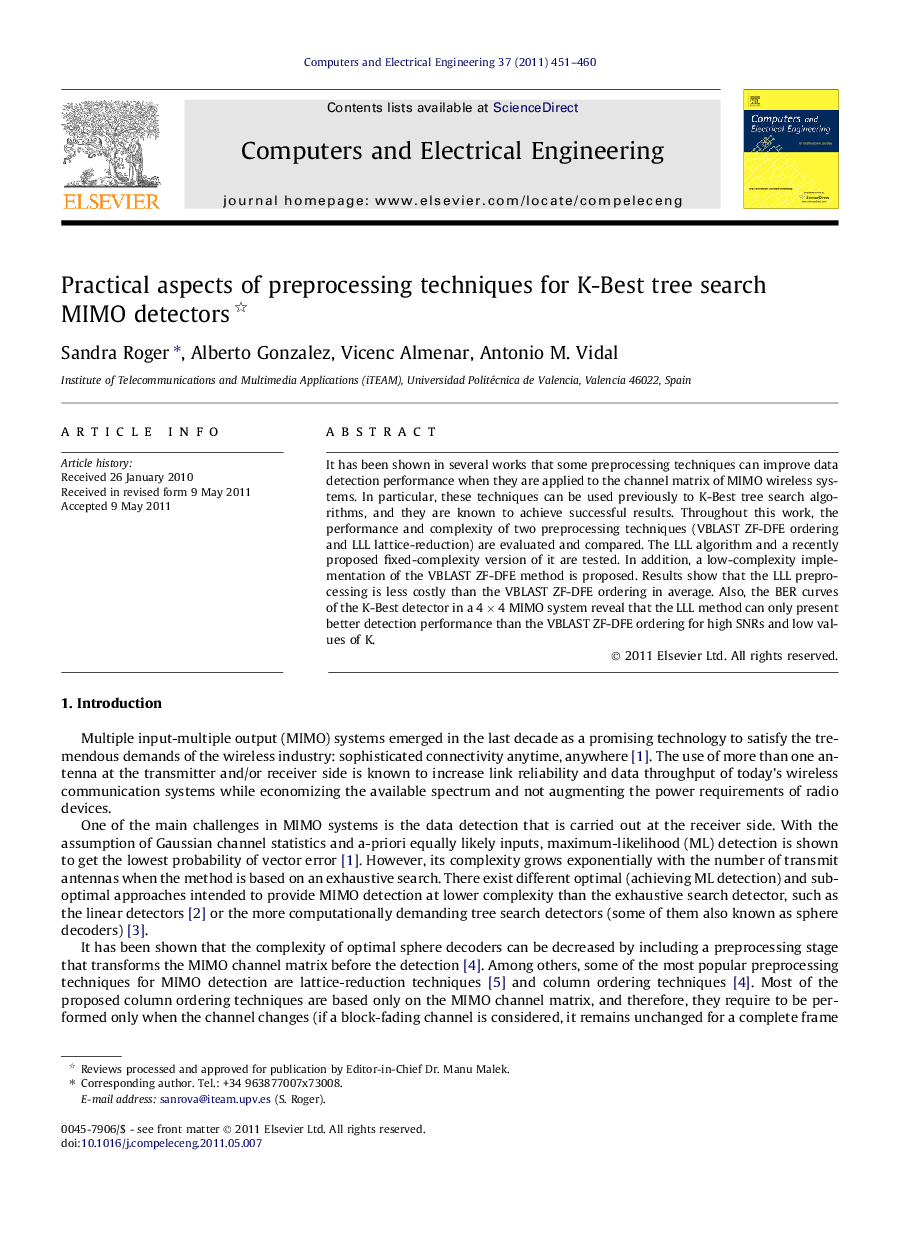| کد مقاله | کد نشریه | سال انتشار | مقاله انگلیسی | نسخه تمام متن |
|---|---|---|---|---|
| 455199 | 695349 | 2011 | 10 صفحه PDF | دانلود رایگان |

It has been shown in several works that some preprocessing techniques can improve data detection performance when they are applied to the channel matrix of MIMO wireless systems. In particular, these techniques can be used previously to K-Best tree search algorithms, and they are known to achieve successful results. Throughout this work, the performance and complexity of two preprocessing techniques (VBLAST ZF-DFE ordering and LLL lattice-reduction) are evaluated and compared. The LLL algorithm and a recently proposed fixed-complexity version of it are tested. In addition, a low-complexity implementation of the VBLAST ZF-DFE method is proposed. Results show that the LLL preprocessing is less costly than the VBLAST ZF-DFE ordering in average. Also, the BER curves of the K-Best detector in a 4×44×4 MIMO system reveal that the LLL method can only present better detection performance than the VBLAST ZF-DFE ordering for high SNRs and low values of K.
Comparison between the performance and complexity of the VBLAST ZF-DFE and LLL algorithms for K-Best tree search detection on a Multiple-Input Multiple-Output wireless system.Figure optionsDownload as PowerPoint slideHighlights
► Preprocessing techniques can improve MIMO detection performance.
► The performance and complexity of two meaningful preprocessing techniques is evaluated and compared.
► A low-complexity implementation of the VBLAST ZF-DFE preprocessing is proposed.
► The LLL method is less costly than the VBLAST ZF-DFE in average.
► The LLL method performs better than the VBLAST ZF-DFE only for high SNRs.
Journal: Computers & Electrical Engineering - Volume 37, Issue 4, July 2011, Pages 451–460